- Back to Home »
- Tourism »
- Tourism Objects of North Sumatra Province
3.13.2015
NORTH SUMATRA

North Sumatra is one of Indonesia's last surfing frontiers. "North Sumatra" consists of 5 islands or island groups: Hinako Islands, Nias, Telos and 2 other obscure island groups to the north. North Sumatra receives similar swell to Mentawais and enjoys its peak swell season from May to September. Despite Indonesia's reputation for hollow lefts, in North Sumatra right-handers are slightly more prevalent. While Lagundri Bay at Nias has been surfed for decades, it is the more obscure rights like Bawa (a Sunset-like right bowl that holds up to 15 feet) and Treasure Island (a long, hollow, mechanical right peeling for 200 meters) that have attracted the attention of late. Throw a mix of hollow and bowl lefthanders into the picture like Asu, Afulu, the Machine, and many more obscure rights and lefts.
In contrast to the small island of Bali, North Sumatra province is large with one of the biggest lakes in the world, Toba Lake, at its navel. The continuous mountain of Bukit Barisan, which extends from Aceh at the tip of Sumatra island to Lampung at the bottom of the island, guards the province on the west side, providing home for thick, tropical jungles and lush vegetations. As you go down the western mountains towards the beaches of the east, mountain streams, strong rivers, and gorgeous waterfalls will accompany you.
Along the length of this province crosses Bukit Barisan Mountains with peaks of numerous volcanoes. The land has thick virgin forests, lush vegetation, rice fields, mountain streams, rivers, waterfalls and sandy beaches. It has a rich flora and fauna. An abundance of birds, butterflies, buffaloes, deer, mouse deer, orangutans and many other export commodities make North Sumatra one of the richest provinces in Indonesia, as it produces more than 30 % of Indonesia's exports. The province offers the visitors, especially nature lovers, beautiful tropical panoramas, terraced rice fields, blue mountains, jungle covered hills, white sandy beaches, music, dance and folk arts.
Toruism Objects of North Sumatra Province
Maimoon Palace
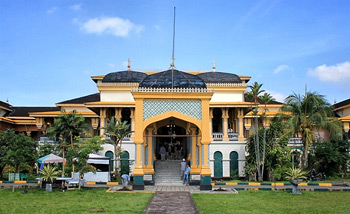
This building is dominated by yellow colors. However, do not connect it with the color of a political party. Yellow was the typical color of the Malay. There are family photographs, furnishings, and old weapons inside the building. The Maimoon Palace was the legacy of Deli Sultanate. Maimoon palace was located in Brigjen Katamso Street, Medan. Sultan Deli, Sultan Makmun Al Rasyid Perkasa Alamsyah, had established this palace. The designer was an Italia architect, and finished in 1888. Built on a land measuring 2.772 m2 wide the palace building is facing to east, and become the centre of the Deli kingdom. This palace consisted of two floors that were divided into three parts, which is the main building, the left wing, and the right wing. In front, around 100 meters, stood Al-Maksum mosque that are well known as Medan's Great mosque.
In the guest room (balairung) we will encounter the throne that was dominated by yellow color. Crystal lights lighted the throne, a form of influence of European culture. The same influences are appeared in the palace furnishings like the seat, the table, toilet and the cupboard and the door, headed to balairung. The room measuring 412 m2 was used for the coronation agenda of Sultan Deli or the other traditional agenda. Balairung was also used as the place where the Sultan received praised from his relatives and family in Islam holidays.
Further more, the number of the rooms was 40, 20 rooms in the upper floor, the Sultan's throne and 20 rooms underneath, not include 4 bathrooms, the warehouse, the kitchen, and the prison in the basement. Interesting if we observe this palace architectural design. The blend between the Islam tradition and European culture was boldly implemented. Apart from the balairung, the building base also showed Europe influence. Some of the building material was imported from Europe, like floor tiles, marble, and terrazzo.
The pattern of Dutch architecture with the door and wide and tall windows, as well as Spanish stylish doors became a part of the Maimoon Palace. The Dutch influenced was also seen in the marble inscription in front of the marble ladder that was written with Latin letter in Netherlands language.
The Islam influence was seen in the form of the curve or arcade in several parts of the palace roof. The curve that had the shape of the overturn boat that was known with Persian Curve was often met on the buildings in the Middle East, Turkey, and India region. The Maimoon palace was one of the most beautiful buildings in Medan. His location is easy to be reach, both from Polonia Airport (about 10 km) and Belawan Port (about 28 km). This historic building was open public every day from 08.00 until 17.00.
North Sumatra Museum
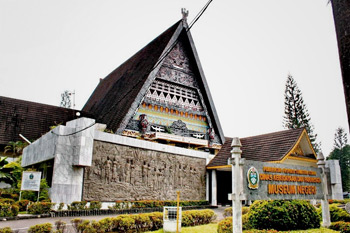
North Sumatran museum was located approximately 4 km to the south from the center of the city, which is in HM. Joni Street 15 Medan. The Minister of Education and Culture Dr. Daoed Joesoef opened north Sumatran museum in April 1982.
This museum open on: Tuesday - Thursday (08.00 - 16.00) Friday - Sunday (08.00 - 15.30) and Closed on: Monday. We could be done some activities in this museum such as; photographs, Study and learn about culture and the object of the North Sumatran history.
The Great Mosque
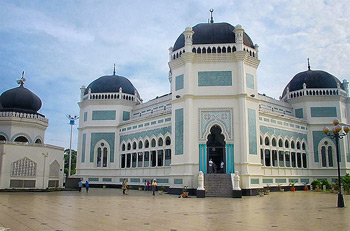
This Great mosque was one of the Sultan Deli legacies in North Sumatra other than the Maimoon Palace. This mosque was still utilized by the Muslim community to pray every day. Some of the building materials for this mosque decoration were made in Italy. Foreign tourists visit this mosque from various countries all over the World. This Great mosque is the most beautiful and biggest mosque in North Sumatra. Sultan Makmun Al Rasyid built this mosque in 1906. This Great mosque is located only 200 m from Maimoon Palace.
The Moorish Style inspired the mosque special architecture. The other Great Medan mosque, there are another mosque to Deli sultanate legacy, Labuhan mosque that was built in 1886. Labuhan mosque was one of the mosques with unique Indian style with the octagon dome. Labuhan mosque was located in the Medan-Belawan highway to north from the centre of the Medan city.
The dome of Al Ma'sum Mosque that had flat and quadrangle shape also in the peak of the roof has the usual crescent moon decoration was also found in other Islamic buildings like the Mosque and the tower that according to the experts often were connected as the symbol of peacefulness, where Islam was broadcasted without violence. Apart from the plan, dome, curves (arcade), the crescent moon decoration on its peak, the influence of Islamic art is clearly visible in its ornamentation, whether on the wall, the ceiling, the poles, and the curved surface (face Arcade) that was rich in the decoration of flowers and winding plants painted with oil paint. This floristic decoration apart from being styled reminds to Tumpal and mekara motive, also painted with Naturalistic style. Except the floral motive and geometric motive, the combination between Polygonal, Octagonal and circle decorations was also appealing. The motive of this kind especially very much found in walls, the curved surface, the ceiling etc. This motive was also found in the iron curtain form of the quadrangle windows and the shape of the curve that reminded us to motive the Indian style wall carving. In Indonesia, this kind of decoration was often acknowledged as Terawangan or Kerawangan decoration, apart as being a decoration, this decoration also functioned as ventilation.
Bukit Barisan Museum
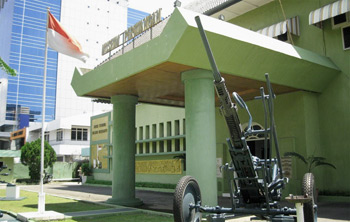
Brigade General Leo Lopulisa opened this museum on June 21 1971. This museum was located in H. Zainul Arifin Street 8, Medan. This military museum kept several historic weapons include the weapon that was utilized in the struggle for independence and the revolt in North Sumatra during 1958. In this museum we could see several motives/ painting of the revolt against the Netherlands. This museum is open on Monday - Friday (08.00 - 14.30) and closed on Saturday - Sunday.
This museum open on: Tuesday - Thursday (08.00 - 16.00) Friday - Sunday (08.00 - 15.30) and Closed on: Monday. We could be done some activities in this museum such as; photographs, Study and learn about culture and the object of the North Sumatran history.
Rahmat Museum
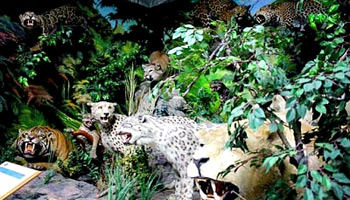
"Rahmat" Museum & the International wild animal Gallery was the only museum in Asia that had about 600 species of fauna collection from various countries, and has recorded in Record Book and accepted the International appreciation in conservation field for animal conservation. In this Gallery there are various wild animal collections from the smallest to the biggest ordered by their origins. The pleasant atmosphere, the building with beautiful architecture, brought us into the world of the wild animal life as well as the astonishing natural environment, to give the pleasant experience for the visitor.
We will enjoy the beauty of nature and the diversity of the animal from difference places in the world. The collection from "African Big Game" that astonishing, made enchanted, Elephants, Rhinoceros, Lions, Buffalos and the African Leopards as well as the species like Bongos, Kudus, and various wolf species that will give the special impression.
Tjong A Fie Legacy Building
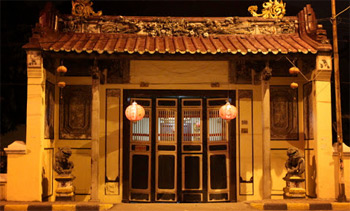
Tjong A Fie was the Chinese Major in Medan, a first millionaire in Sumatra. Up to now his name continues to recall in Medan City, although he has died during 1921. In 1870 Tjong A Fie and his older brother, Tjong Yong Hian left Moy Hian village, in Canton (China) to travel to Tanah Deli as the contract labors in the Tobacco plantation. These brothers were very good at seeing business opportunities. Once they stay in Labuhan Deli capital and opened a shop named Ban Yun Tjong.
Tjong A Fie knew true the requirement for the Chinese labors and the other expatriate that just arrived in Tanah Deli, so in a short time he has become very rich. Until today the old historical building that was located in Kesawan area was Tjong A Fie family's residence, which was the first building that built in this region.
The Crocodiles Breeding

Medan has the largest crocodile farm in Indonesia. Here one can see how the crocodile eggs are hatched, and then reared somewhere else. This farm is located at Asam Kumbang, 5 km from the heart of the city. Although this place is not well maintained due it's short of funds but it may worth visiting. Since these crocodiles may not be exported or sold the owner must feed then from the entrance fee. In this garden we could see small crocodiles hatchlings to 25 years old crocodile.
They lived in the swamp and in small basins. There are about 2,700 crocodiles, which consist of down-stream crocodiles (buaya muara / Crocodylus porosus) and swamp crocodiles (Tomistoma schlegelii). Some of these crocodiles are trained for some stunts as tourist attraction. This Crocodile garden was opened for the public every day from 9.00 to 17.00.
Medan Zoo

Medan was located in Bunga Rampe IV Street, Simalingkar B District, Medan Tungtungan Sub district, about 10 kilometers from the centre of the city. Medan mayor, Abdullah, opened the zoo on April 14 2005 that at this time is the new zoo, the KBM area with the width 30 hectare. On earlier days, Medan Zoo was located in Brigjen Katamso Street, Kampung Baru District, Medan Maimun.
This zoo has taken a lot of interest from the citizen. Around 1.000 visitors visited this zoo each week ends. In working days, the number of visitors is about 150 visitors every time days. One of them was the Sumatran Tiger or Panthera Tigris Sumatrae, only founds in Sumatran Island. The Sumatran tiger occupied in the low land forest, the mountainous and semi-mountainous forest, and in the swamp forest in Sumatran Island.
NIAS ISLAND
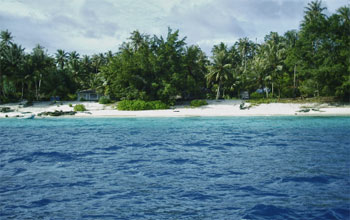
Nias Island lies about 125 km of west Sumatra Island on the Indian Ocean. It is part of North Sumatra Province. The water surround the island is great for sea activities, such as surfing and scuba diving. The people also have curious culture, which will enrich visitor's heart. The island has some prehistoric remains, which built on megalithic Stone Age, and considered came from the oldest megalithic culture in Indonesia.
The local call their land as Tano Niha or "land of the People", while the people calls them selves as Ono Noha. Ethnically, the Niasers are involved in to the Ptoto-Malay ethnic who once ever get with the Asian Proto-mongoloid world. Niasers speak a kind of language related to Malagasy. Because of the similarity in languages, custom, body size of the Niasers with the Bataks on Sumatra mainland, it is possible that the Niasers have derived from the Bataks.
SOUTH TAPANULI
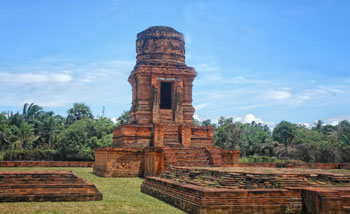
It lies in the southern part of North Sumatra, bordering West Sumatra and Riau provinces. This region has a population of about 900,000 and lies on the way to West Sumatra. The sceneries are attractive all the way. Some of the tourist objects are Portibi Temple, Dolok Simago-mago, Pakantan, Husor Tolang, Sibanggor, Adian Lungun Niroha. There are also hot springs and a good hotel available at Tor Sibohi. This district is known for its ceramics and handicrafts.
The Portibi temple is at Padang Bolak, 78 km from Padang Sidempuan, or 518 km from Medan. There are cultural remnants of a Hindu temple of the Panai Kingdom, founded in 1039 A.D.
PEMATANG SIANTAR
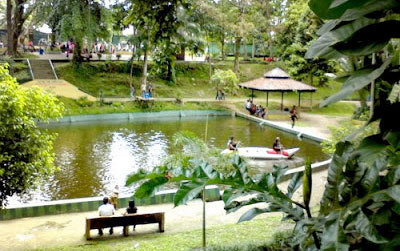
Pematang Siantar is the second largest city, lying 128 km to the South of Medan. On the way, we will pass through many rubber, cocoa, palm oil, tobacco and tea plantations. This is the richest part of North Sumatera, because these plantations produce the main export commodities.
Then onward to Toba Lake we will see a vast stretch of land covered with thick forests, plantations, terraced rice fields, lush vegetation, green hills and mountains.
JANGGA
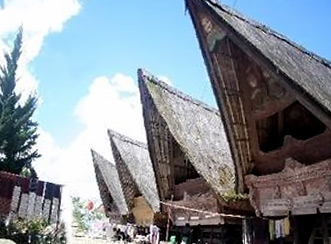
Jangga is a village of native Bataks, located in the hills, on the main road to other Batak communities living separately there, like Lumban Nabolon, Tonga-Tonga Sirait Uruk, Janji Matogu, Sihubak hubak, Siregar, Sigaol, Silalahi Toruan Muara and Tomok Sihotang. There are King Tambun and King Manurung monuments, traditional houses, cultural and other historical remains left by Batak kings centuries ago. This original native Batak village has complete ornamentation, and is much visited by domestic and foreign visitors.
Visitors can watch young girls or old women weaving the beautiful ulos cloth inside the booths their principle livelihood beside agriculture.
PARAPAT TOWN
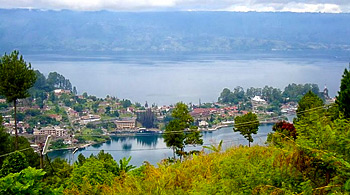
Parapat town is the main tourist resort and lies on the very shore of Toba Lake. This lake is about 50 miles long and 16 miles across, with about 1,400 feet depth. In Parapat, live Batak Toba and Batak Simalungun tribes, and are happy and easygoing people. They are known for their lively and sentimental love songs. Recreational sports in Parapat are among others swimming, water skiing, motor boating, canoeing, and fishing. Golf is at Sally golf course (19 holes), about 5 km from Parapat. Parapat is 176 from Medan and can be reached in 4 hours by bus. The climate in Parapat is cool and dry, making Parapat become an ideal place to relax.
There are many hotels, bungalows, villas, and rest houses welcome visitors. Small shops sell souvenirs such as Ulos (local woven cloths) and specific fruits locally grown.
Toba Lake

World famous is the crater Toba Lake in the Batak highlands; approximately five hours drive from Medan. Toba Lake is the largest lake in South East Asia and also one of the most spectacular, surrounded by tall mountains and with the large island of Samosir in the middle. If we descend from the mountain we see the lake glittering in all its beauty. The Dutch writer Rudy Kousbroek even called Toba Lake, 'the most beautiful place on earth'. Most visitors stay on the peninsula of Tuk Tuk on Samosir, named after the linguist Herman Neubronner van der Tuuk. In general people stay several days on Samosir to discover the island, to visit traditional Batak villages, to swim in the lake and go to the hot springs in Pangururan.
The centerpiece of North Sumatra, Lake Toba's bracing climate and magnificent panoramas clear the mind and soothe the soul. For decades a magnet from regional and foreign visitors alike, Toba has developed into a full-featured highland resort while retaining the rustic charm and relaxed ambiance that define Toba's attraction. Formed by a stupendous prehistoric volcanic explosion, the 100 km long lake is the largest in Southeast Asia and one of the deepest and the highest in the world. The drama of that cataclysmic birth persist in 500 meter cliffs dropping into the blue-green waters, surrounded by steep, pine covered sloped, the climate is fresh and pleasant, with just enough rain to support the lush vegetation.
Toba Lake is a 100kms x 30kms volcanic lake in North Sumatra, Indonesia. Toba Lake has become one of the main tourist attractions for a long time in North Sumatra apart from Bukit Lawang and Nias, visited by both domestic and foreign tourist.
The Origin of Toba Lake
It is estimated that Toba Lake was formed during a volcanic eruption about 73.000-75.000 years ago and which was the most recent super volcano eruption. Bill Rose and Craig Chesner from Michigan Technological University estimated that volcanic materials that were spewed out the mountain totaling 2800km3, with 800km3 ignimbrites rock and 2000km3 volcanic ash that is estimated was blown (wind) to the west for 2 weeks. This incident caused mass death (destruction) and to several species also causes extinction. According to some DNA proof, this eruption also shrinks the humankind population to around thousands back then.
After this eruption, a caldera was formed that was filled by water afterwards and now known as Toba Lake. The pressure from the dormant magma, which has not yet erupted, caused Samosir Island to emerge. The region that now known as Samosir Island originally was a peninsula that attached to the Sumatran mainland. In this peninsula the Netherlands built the water canal 10 m width.
For the first time visitors, going through Medan-Parapat route seeing a lake as big as that made Samosir appear like an amazing grand island. However, the island perspective will certainly faded with the increase in Toba plateau visitor, Nias and the other places in the south, through Medan-Berastagi route. Samosir occupied a central geographical position in the Toba plateau region. With the declaration of the Toba Samosir Regency (the inhabitants 302.000 lives, the area with wide of 3.440 km including the lake) it finally ascend from only a shadow into a Regency. Moreover, the width of Samosir Island exceed Singapore (647 km), in fact Toba Lake almost twice bigger than Singapore. The Samosir image in tourism books as the backpackers location must be changed because this historic place must restore the greatness of its past.
The Three Batak Megalithic
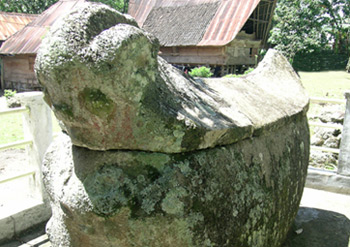
The three megalithic sites on Samosir bear witness to the glory and horror of Batak history. The three consist of 300-year-old stone seats and benches arrayed in a circle. The first set of ruins was used as a conference area for Batak kings. At the second site, the kings would sit in judgment of a criminal or enemy prisoner. If the accused were found guilty, the assembly would move to the third set, which features the ghastly addition of a central stone execution block.
Other, less gruesome attraction can occupy many days of exploration and discovery. All over the island are superb examples of traditional Batak houses, with elaborate carvings and decorations. Performance of life-size is Gale-gale wooden puppet are held frequently, and at any moment, the musical Batak might break into an impromptu song, the seeming effortless, multi-part harmonies belying the casual setting.
Now, students and young professionals on tight budget have a good value accommodation, restaurants and general cosmopolitan atmosphere remain. With few motor vehicles, the island is a walker's paradise. Local guides are available for numerous hikes of varying difficulty around the island and surrounding lakeshore. Those who complete the 1600 meter climb up muddy trails to the village of Roonggurni need not be proud of their accomplishment: village children descend and re-climb the mountain every day to attend school.
Tuk - Tuk
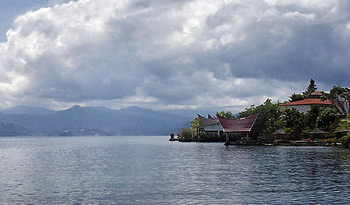
The visitor also could visit Tuk Tuk to look for accommodation (inns and hotels), 42 km from Pangururan to Tuk Tuk or one-hour trip on car. Approximately 50 inns and hotels in various classes are available in Tuk Tuk. There are also several high-class hotels here. From the positive aspect, clearly tourism supported the local business. On the other hand, the physical development practical ignored principles of the business and town planning when businessmen rushes to built hotels, guesthouses, etc.
Entered Tuk Tuk is like visiting Legian or Sanur Bali in the early stage. With several shops displayed clothes and art objects, followed by cafes, discos and hotels. At night, a lot of rejoicing tourists (mostly domestic) surrounded campfire while playing the musical instrument and the typical Batak song.
Bohorok
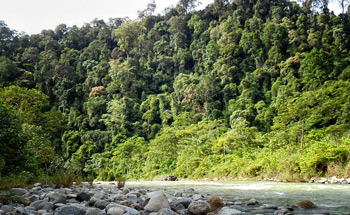
This place is for the adventurous, accessible through Sumatra's inland wilderness, crossing rivers and going over steep hills. The area lies south of the Mount Leuser National Park, a rehabilitation center for orangutans in Bahorok, which was inaugurated in 1973. Orangutans living here are of Sumatra and Kalimantan origin.
Bohorok Orangutan Rehabilitation Station offers a virtually guaranteed sighting of young and mature orangutans. These orangutans are taught how to survive before they are release into the remote areas of Mount Leuser National Park. The eastern fringes of the park can be visited from Brastagi, but for naturalists and trekker, the best entry point is the town of Kutacane.
Great Bukit Barisan Forest Park

It is located at Tongkoh village in Karo highlands district, about 59 km from Medan. Formerly Tahura Bukit Barisan since 1916, known for its location called Arboretum Tongkoh Berastagi, however since 1989 it had renovated and renamed into Great Bukit Barisan Forest Park. There is the zoological museum and a gazebo with Karo ornaments designed on the top of the roof, painted with various writings of typical welcome greetings in Tapanuli, "Horas".
Berastagi
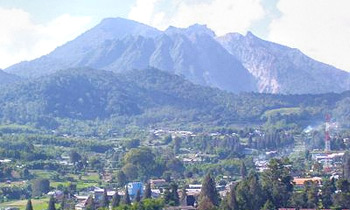
Berastagi, a tourist town, is another lovely town located in Karo highlands. The town is known for its plantations and various kinds of flowers, vegetables and fruit, most famous which is Marquisa passion fruit. It's 66 km southwest of Medan and is 4.594 feet above sea level. There is a pleasant colonial-style hotel with a golf course. Other new hotels can also be found. From Gundaling Hill a clear view of Mt. Sibayak and Mt. Sinabung volcanoes can be seen.
From this city, the visitors will enjoy charming scenery to the active mountainside, which are Sibayak Mountain and Sinabung Mountain. To climb Sibayak Mountain require at least 3 hours trip and we could enjoy pretty scenery in these mountains or 3 to 4 hours trip in the forest to see the nature wealth inside, for both the flora and the fauna around this forest.
The atmosphere of green nature from the reflection of the trees from the slope of Rangkap Sibayak Mountain (well known as Sibayak mountain) made the Berastagi city had flooded by tourists. The hill line along with the agricultural field, are always ready to refresh its visitor's eyes. Berastagi which rich with agro-industries became the appropriate choice for recreation spot other than Toba Lake and Samosir Island, which has become a trademark of North Sumatra.
Berastagi has the strategic location to become the stopping place, not just because several tourist attractions are easy to be accessed from here, but also the hotels are well provided. Hotels can be easily found with varying price, by offering the design typical to the locals. However the visitor still have the choice to choose the hotels and villas that historically were the legacy of colonial period.
Pandan Beach
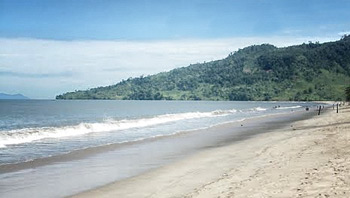
A seaside resort with white sandy beaches where a fishing village can be found 11 km from Sibolga. Here the visitors can enjoy the magnificent view of the Indian Ocean and see fishermen in their sailing boats from the beach to the open sea. The restaurants offer us the grilled fresh fish just caught from the sea. Small souvenir shops selling seashells, corals, ring-stones, etc, are available here.
Lau Kawar Lake
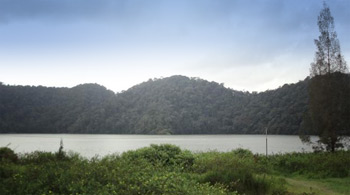
Kawar/Lau Kawar Lake is one of the tourist attractions in Karo Regency ranged about 100 hectare. The distance from Medan City is about 85 Km. This tourist attraction crowded with domestic and foreign tourists on Saturday and on Sunday as well as on holidays.
Legend Of Lau Kawar
The rice harvest season has arrived in Kawar village. The entire citizen was happy with the rice crops that had turned yellow and ripe. Likewise the Kawar village chief was definitely delighted since he had a very wide field. What the village chief hoped for now evidently was granted in this year. As the expression of gratitude to God, the Kawar Village chief held a Guro-Guro Aron Drum party in his field for four day and four the night. The entire citizen was invited to that extraordinary party.
Because the invitation was send by the village chief no one dare to refuse the invitation except an old woman, the mother of the village chief. This woman was alone in the house, while all of her child and grandchild went to the party. Continuously some faint drum voices from time to time could be heard from her bed. Around midday the danced was stopped for lunch break. The village chief and the whole villagers were having luxurious and abundant lunch. Beef and goat as well as pig and chicken were served in the meals; everyone was full, satisfied and happy. But this was just the first day.
After resting for a moment, the dancing and singing was continued came guided by the village chief's child. Strangely while dancing in the afternoon the village chief called his small child, apparently he remembered his mother who was left was alone and hungry at home. Rice with decent side dishes was prepared. The small child was told to deliver it to his grandmother house. However unfortunate fate once again fell on the grandmother, he forgot to delivered the lunch in time, even food he should be delivering was opened by him in the middle of the road and all beef, goat, chicken, and pig was eaten until only the bones left and then the grandchild packed the bone into the original parcel.
Although the lunch was arrived very late on the afternoon but the grandmother still smile to her grandchild who came to bring the lunch. After delivering the lunch, the grandchild then returns the field immediately. Thus the old woman with great difficulty got up from the bed to eat. But when the parcel in opened the grandmother startled because there are only bones in it. For a long time the baffled grandmother gazed at the parcel, did not realized his tear fell wetted his wrinkled cheek. Indeed the grandmother's fate was poor. The child whom she raised into a respected village chief has forgot his mother. The grandmother's conscience was very sad, disappointed and angry. She cried, and swore "I who give birth and raised you, till you have the respected position evidently you could not respect your own parents, this mother's milk as the witness my child, for that is swore” her tears continued to fell on her cheek. Not long afterwards the words of this unfortunate grandmother was granted, dark dew began to close the sky, as the day got dark. Lightning and the thunder swarmed continuously. The whole citizen who was celebrating the party began to panic; moreover the rain began to pour down rapidly.
The party was ended instantly; the entire citizen ran looking for a sheltering place. But the rain does not care, the rain continuously poured down for seven day and seven the night, then suddenly a flood happened. Kawar village that located precisely under Sinabung Mountain Foot was sunk. Nothing could be saved. Kawar village then became a lake, which today known as the Lau Kawar Lake.












I like beaches and lakes then other.
BalasHapusLuxurious hotel-in-guwahati :: ROYALE de CASA